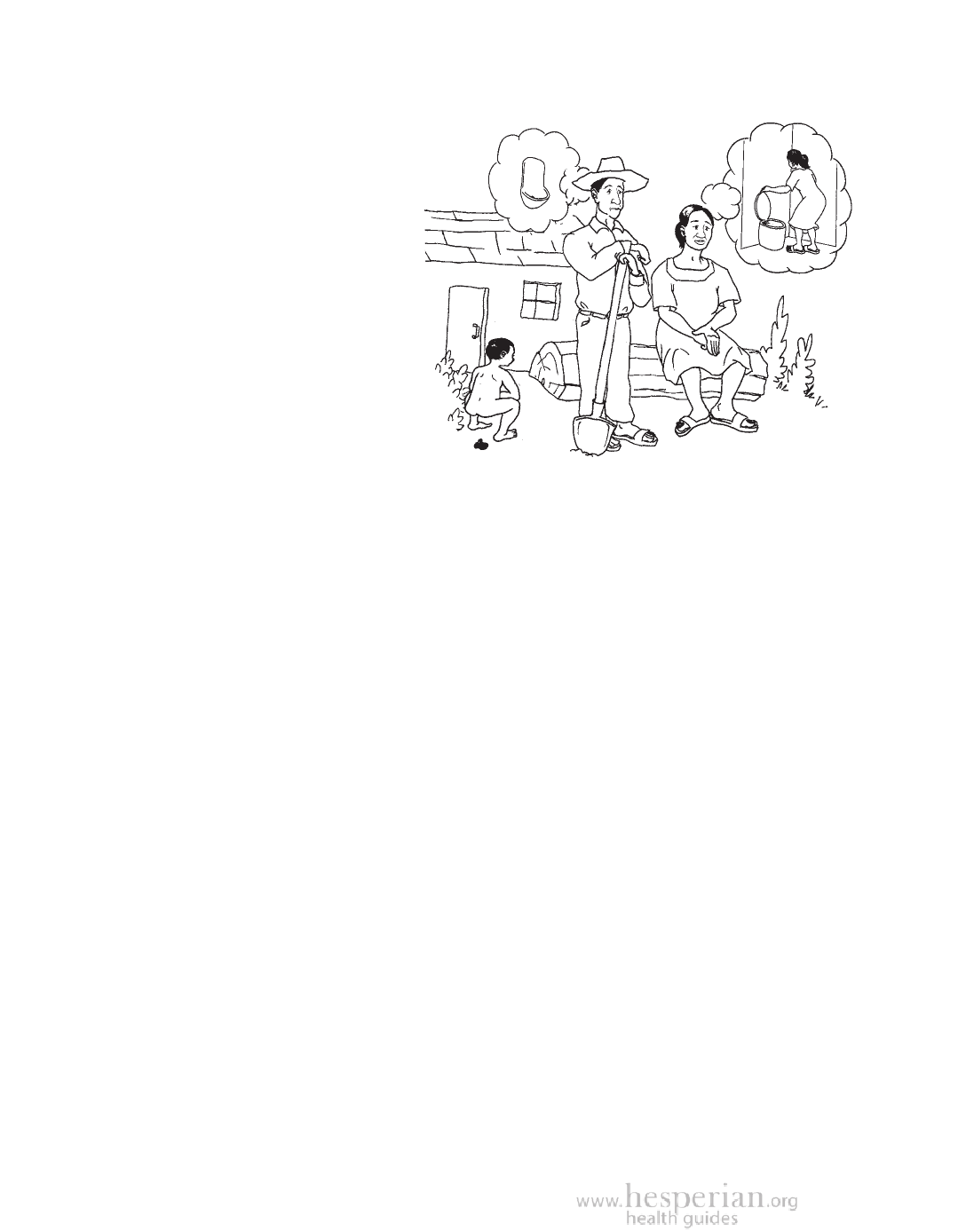
106 Building Toilets
Planning for Toilets
Every person and every
community has a way of
managing human waste, even
if it just means that people
go into the bush or forest to
urinate and defecate. Not all
people in a village use the same
method, and not every person
disposes of their waste the
same way all the time. Some
people may want to change,
while others may not. Whether
it means building a new kind
of toilet, improving access to
safe toilets, or some other kind
of change, almost every sanitation
method can be improved.
A plan that leaves women or anyone
else without toilets will not prevent
illness in the community.
Small, step by step changes are easier than big changes all at once.
Examples of small changes that can have a big impact on health, safety, and
comfort are:
• keeping wash water and soap near the toilet.
• adding a screened vent to a pit toilet to let air flow and also trap flies.
• adding a durable platform to an open pit.
When planning or making changes in the way human waste is disposed of in
your community, keep in mind that every method should:
• prevent disease — it should keep disease carrying waste and insects away
from people and food, both at the site of the toilet and in nearby homes.
• protect water supplies — it should not pollute drinking water, surface
water, or groundwater.
• protect the environment — toilets that turn human waste into fertilizer
(ecological sanitation) can conserve and protect water, prevent pollution,
and return nutrients to the soil. (See pages 124 to 135.)
• be simple and affordable — it should be easy for people to clean and
maintain, and to build for themselves with local materials.
• be culturally acceptable — it should fit local customs, beliefs, and needs.
• work for everyone — it should address the health needs of children,
women, and men, as well as those who are elderly or disabled.
A Community Guide to Environmental Health 2012